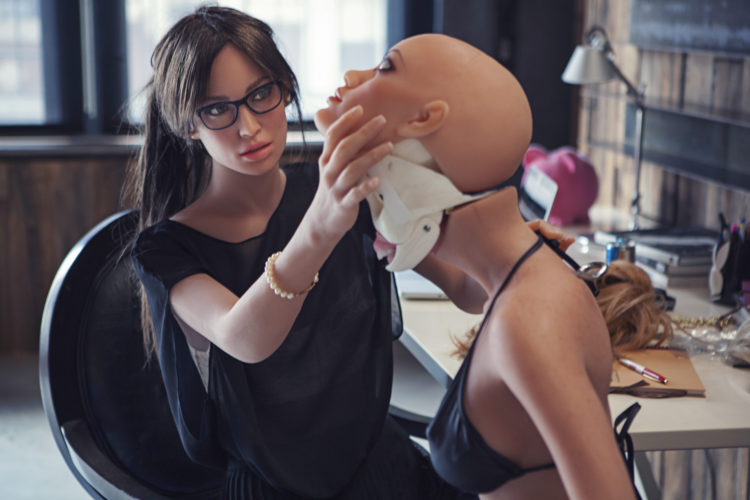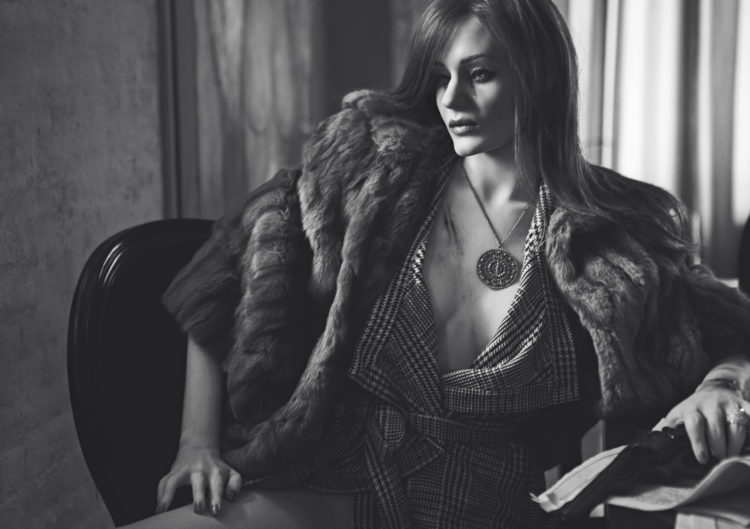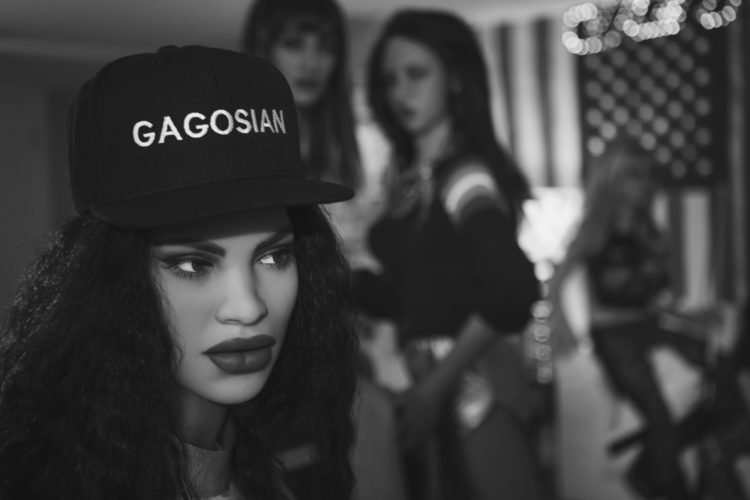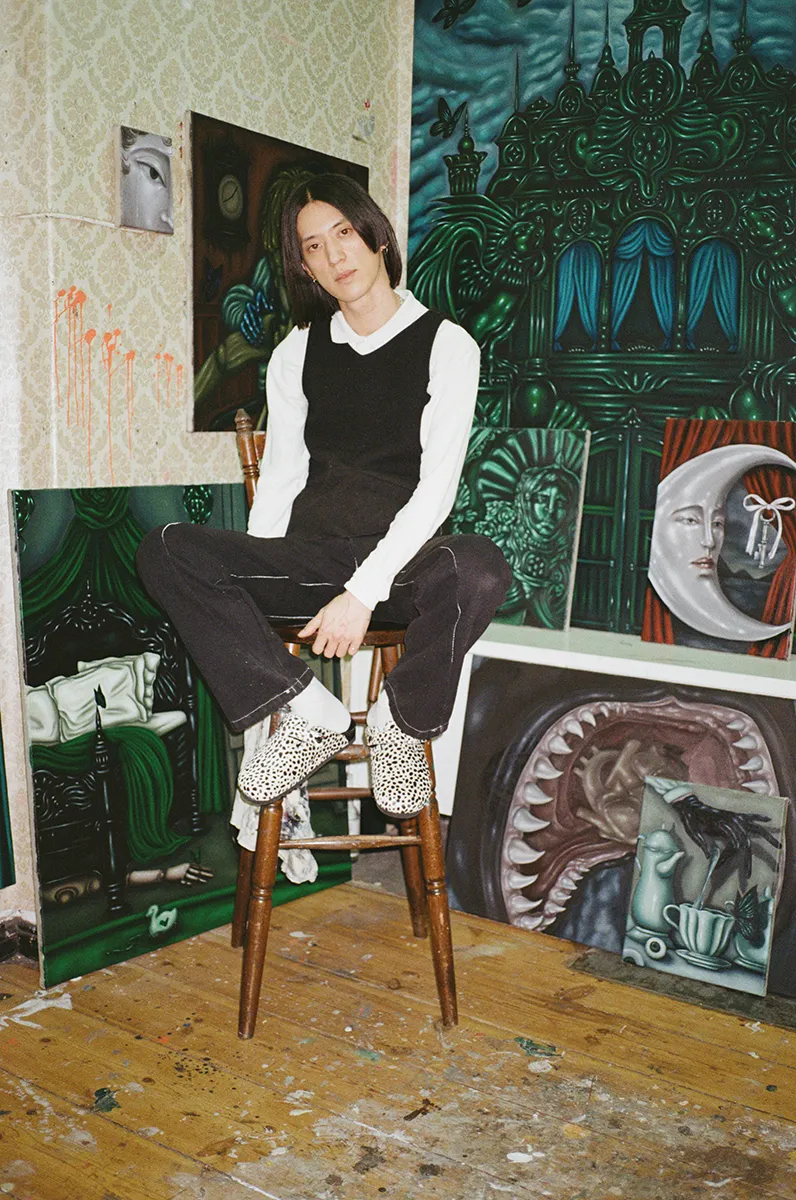For an increasing number of internet consumers, the perfect match is made of silicone. As the sex doll industry continues to grow, we talk to artist Stacy Leigh about the dystopian love ideals that manifest from widespread social disconnect and the technological advances in our world.
There’s no such thing as “the perfect woman”, but as far as patriarchal beauty standards go, Renee comes pretty close. She’s 5’10” with tumbling blonde locks that cascade over her supple skin, stopping just shy of her almost obtrusively pert breasts. But Renee is made of plastic. She’s one of over 25 tailor-made temptresses, built from silicone and nestled among various versions of Violas, Olivias, Tanyas and Rebeccas ripe for the picking on RealDoll.com—and yours for the modest price of $6,300. True, she’s limp, lifeless and devoid of any morsel of consciousness—for most, not the most right-swipeable triad of qualities—but for a rapidly growing array of consumers in the $15 billion sex toy industry, it’s the picture of a perfect match.
Love dolls, sex dolls—or robots, as they’re increasingly known—have come in and out of the spotlight over the last three decades. The BBC documentary Sex Robots and Us last year revealed the huge technological advances that have been made in the manufacture of so-called “real dolls” since the channel’s investigative Guys and Dolls programme aired back in 2002. Dolls are more lifelike than ever in both appearance and touch, from the fragility of their features to the look of their labia. And as the industry continues to boom—resulting in a plethora of sites which coax straight men into creating their own fantasy woman like a “real life” Sim—so the ethical impact of such silicone relationships are increasingly brought into question. The rhetoric that populates the testimonial pages of these sites is hugely problematic. A post on Realdoll4me reads, “you will not hear a ‘no’ from a sex doll. She will do everything you want and agree to all your decisions.” An anonymous user on RealDoll.com writes of his plastic partner Sorchia, “I love her every bit as much as the first day she sat on my sofa looking so vulnerable.” The sentiments that dominate these posts are ones of submission and objectification, from an overwhelming male audience, towards these silent, servile “women”.
In the wake of #MeToo, and amidst a global effort to embolden women to speak up and not be silenced, the taciturn compliance of a sex doll is unsettling to say the least. But there are two sides to every story, and it’s clear that this industry was one born out of loneliness, desperation and that innate inner yearning for attention, affection and intimacy that resides within all of us. It’s the sad manifestation of a screen-reliant and socially inept society. Optimistic (although unconvincing) claims link a rise in sex doll usage to a fall in rape statistics and prostitution, as well as sexual abuse in children (a disturbing portion of the sex doll industry is dedicated to creating petite, childlike dolls.) But, as with much of the Black Mirror-esque technological innovation of today, the sex doll issue is multi layered, and divided.
It’s this complex duality that’s the subject of US artist, Stacy Leigh’s series average americans (that happen to be sex dolls). On the one hand perturbing—eerily still and hauntingly vacant—and on the other a physical embodiment of society’s ever increasing loneliness, her images speak to the very real conditions of modern life through depictions of inanimate “humanity”. Lifeless “women” find themselves the protagonists of Leigh’s cinematic portraits, smoking, drinking, reclining, posing, fucking. It’s a dystopian concept—simultaneously real and fabricated—that invites an unrelenting sense of intrigue. In amidst debates of sex doll brothels and doting digisexuals, we caught up with Leigh to discuss her work, the decay of real life relationships and society’s nose-dive into isolation.

How did you first become acquainted with the sex doll industry?
I first became aware of sex dolls back in the ‘90s. I saw Realdoll featured on an episode of a docu-series called Real Sex, on HBO. I did some research on the internet—which at the time was dial up—and stumbled upon some owner pics. I wanted to own one, but couldn’t afford it. I was in my ‘20s and not really settled financially. Eventually, I was able to purchase a doll in the early 2000s, which led to my obsession with photographing them.
And what about these lifeless “beings” appealed to you so much? Why use them as subject matter?
My assumption as to why I have used dolls as subject matter is probably very basic. I would guess it’s because dolls are a part of many children lives—and my childhood was no exception. I was an only child, raised by a single mother. Dolls kept me company, and allowed me to escape my meager surroundings. If you think about it, it’s one of the first ways a child learns to use their imagination. Children project their little made-up stories onto dolls, so using them as a tool in my art, to tell stories, seemed like a natural progression.

What was it like to see a sex doll “in the flesh”?
When the first doll arrived, I was blown away by how much of a presence it had. Unlike some, I was never creeped out by the uncanny aspect of a life size human replica. I grew up with Barbie dolls and consider myself a doll collector of sorts. In fact, I still have some of the dolls from my childhood.
Obviously these two different types of dolls, childhood and adult (and their respective means of “play”) are very different, but also have a lot of similarities—mainly the idea of fantasy. Why do you think dolls play such a big role in the projection of fantasies?
For me, growing up was a strange time. My parents were getting divorced and I was an only child. My mum was a terrible alcoholic and left me at a neighbour’s house a lot when she was working to support me. I was exposed to terrible things as a child and lived a very rich fantasy life, through my dolls. My barbie dolls were my escape as much as they were my therapy.

It seems sex dolls are therapeutic for a lot of owners, too, who view them as companions and lovers as opposed to mere sexual objects. Have you had the opportunity to talk to any owners? What’s the demographic like?
I know many, many doll owners, both male and female. The one common thread amongst doll owners who use them for companionship is creativity. There seem to be a lot of musicians and artists! If you want the sob story, there are a lot of lonely people. I’d venture to say that most of society is lonely with the advent of computers and smartphones.
Definitely. The industry latches on to these cultural conditions and it says a lot about contemporary society.
Exactly. If you’d asked me about this ten years ago, I would have said that sex dolls were manufactured to fulfill an ideal or notion of perfection. But now there’s such a large variety of dolls out there that I can no longer say that. People increasingly want a doll that mirrors a human, not idealises them. Were there not a need for companionship, dolls would not be integrating at the speed they are. We, as a modern society, have brought this on ourselves, by slowly chipping away at human interaction. Instead we opt to keep our eyes locked on a screen. It’s sad really, but I am married, so I get to connect with someone every day. I’m lucky I suppose.

What were your preconceptions about sex dolls and how has that changed since you began working with them and learning more about the people that use them?
The only misconception I had about sex dolls was their ability—or rather inability—to pose. All of that has changed now that some of them can stand unsupported. I never had any notions about doll owners before my foray into working with sex dolls. Maybe I thought it was 99% men. Turns out it’s more like 85% men.
What’s your process for setting up an image? How do you create your sets and decide the personality of each doll, as it were?
Creating a final image is a multi-step process that varies. I’m generally a one-person act, so it can take weeks to build a set for a shoot. First comes the actual idea, which is quickly followed by feasibility on finding or creating a location. Then I “cast” the dolls. My dolls don’t have names or backstories, they are merely actors in my staged world.
What has the response to your work been like?
The interesting thing about the response to my work is how much it varies from person to person. Most often there is a reaction, good or bad. Not many people are indifferent, and if they are, they sure don’t act like it. Most shocking is the rare person who is downright offended—I used to get that a lot more in my early days photographing the sex dolls, but with robots and AI being more mainstream, I find most folks get a kick out of it.


Photography STACY LEIGH




